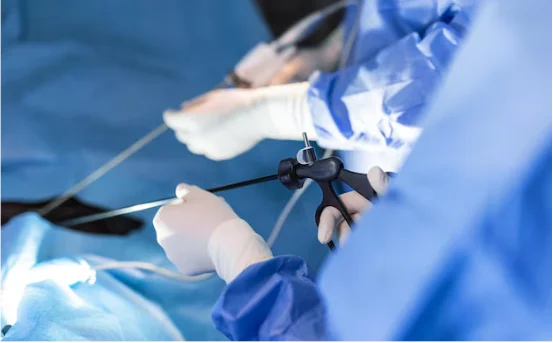Balloon valvuloplasty is a minimally invasive procedure that has revolutionized the treatment of heart valve diseases, especially for patients who are not ideal candidates for open-heart surgery. It is often used as a first-line treatment or palliative option for certain types of valvular stenosis. Understanding when is balloon valvuloplasty surgery needed is crucial for timely intervention and better patient outcomes.
What is Balloon Valvuloplasty?
Balloon valvuloplasty, also known as balloon valvotomy, is a catheter-based procedure used to open a narrowed heart valve. During the procedure, a balloon-tipped catheter is inserted through a blood vessel and guided to the affected heart valve. Once in position, the balloon is inflated to stretch the valve open, improving blood flow and reducing symptoms.
This technique is most commonly applied to the mitral valve, aortic valve, pulmonary valve, or tricuspid valve, depending on the type of stenosis.
Understanding Heart Valve Stenosis
Heart valve stenosis is a condition where one or more of the heart’s valves become narrowed, impeding the normal flow of blood. This can lead to symptoms such as:
- Shortness of breath
- Fatigue
- Chest pain
- Fainting (especially in aortic stenosis)
- Palpitations or irregular heartbeats
If left untreated, valvular stenosis can cause heart failure or other life-threatening complications.
When is Balloon Valvuloplasty Surgery Needed?
- Mitral Valve Stenosis Especially Rheumatic Origin :- One of the most common indications for balloon valvuloplasty is rheumatic mitral valve stenosis. This condition typically affects younger patients in developing countries and results from rheumatic fever.Balloon mitral valvuloplasty (BMV) is considered the preferred treatment when:
- The valve anatomy is favorable (pliable, non-calcified leaflets)
- There is no significant mitral regurgitation
- No presence of left atrial thrombus
- The patient is symptomatic (NYHA class II or higher)
- The patient is a poor surgical candidate due to age or comorbidities
In such cases, balloon valvuloplasty can significantly relieve symptoms, delay the need for valve replacement, and improve quality of life.
- The valve anatomy is favorable (pliable, non-calcified leaflets)
- Aortic Valve Stenosis in High-Risk Patients :- Balloon aortic valvuloplasty (BAV) is generally used for severe aortic stenosis in elderly or frail patients who are not eligible for surgical aortic valve replacement (SAVR) or transcatheter aortic valve implantation (TAVI).This procedure is usually recommended when:
- The patient is symptomatic (angina, syncope, heart failure)
- There is a need for temporary relief of symptoms (e.g., bridge to TAVI or surgery)
- The patient is undergoing another non-cardiac surgery and needs short-term relief
- The patient is terminally ill or chooses palliative care
Although BAV does not provide long-term relief, it can offer temporary improvement in hemodynamics and symptom relief in selected patients.
- The patient is symptomatic (angina, syncope, heart failure)
- Pulmonary Valve Stenosis Especially in Children :- Balloon pulmonary valvuloplasty is the treatment of choice for congenital pulmonary stenosis, particularly in infants and children.It is performed when:
- There is moderate to severe pulmonary stenosis
- The patient is symptomatic (cyanosis, fatigue, poor growth)
- There is evidence of right ventricular hypertrophy or dysfunction
- The valve is not dysplastic or heavily calcified
In most pediatric patients, this procedure is highly effective and can prevent the need for surgery.
- There is moderate to severe pulmonary stenosis
- Tricuspid Valve Stenosis Rare but Treatable :- Tricuspid stenosis is a rare condition often caused by rheumatic heart disease. Balloon tricuspid valvuloplasty may be considered when:
- The stenosis is severe and symptomatic
- There is no significant tricuspid regurgitation
- The patient is at high surgical risk
- The valve is anatomically suitable for dilation
Due to the rarity of this condition, balloon valvuloplasty is less frequently performed, but can still be beneficial in selected cases.
- The stenosis is severe and symptomatic
- Patient Selection and Evaluation :- Deciding whether balloon valvuloplasty is needed requires a comprehensive evaluation, including:
- Echocardiography to assess valve structure and function
- Cardiac catheterization to measure pressure gradients across the valve
- Electrocardiogram (ECG) and chest X-ray
- Blood tests and risk stratification
A multidisciplinary heart team including a cardiologist, cardiac surgeon, and interventional cardiologist – usually evaluates the risks and benefits before recommending the procedure.
- Echocardiography to assess valve structure and function
Benefits of Balloon Valvuloplasty
- Minimally invasive :- No open-heart surgery required
- Quick recovery :- Shorter hospital stay and faster return to normal activities
- Symptom relief :- Immediate improvement in valve function and reduced symptoms
- Bridge to surgery :- Can stabilize patients for future definitive surgery
- Palliative care :- Offers symptom relief in patients unsuitable for major surgery
Risks and Limitations
Despite its many advantages, balloon valvuloplasty is not suitable for all patients. Potential risks include:
- Valve regurgitation (leakage)
- Embolism or stroke
- Cardiac tamponade (rare)
- Valve restenosis over time
- Ineffectiveness in heavily calcified or malformed valves
Therefore, careful patient selection and proper procedural planning are essential for optimal outcomes.
Conclusion
Balloon valvuloplasty surgery is needed in specific cases where valve stenosis causes significant symptoms, and the patient meets anatomical and clinical criteria for this less invasive intervention. It offers a valuable alternative to open-heart surgery for many patients, particularly those with mitral or pulmonary valve stenosis, or those at high surgical risk with aortic or tricuspid stenosis.
Timely diagnosis and intervention can improve prognosis and enhance the quality of life. If you or a loved one is experiencing symptoms of heart valve disease, consult a cardiologist to determine whether balloon valvuloplasty is the right choice.























